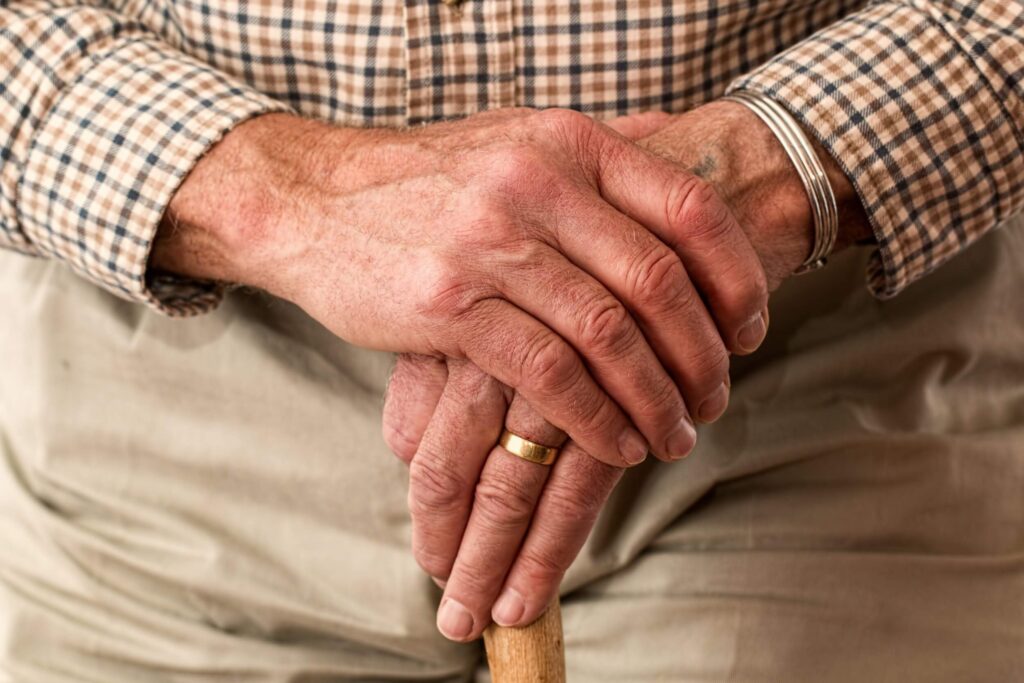Shaped like tiny batteries in our cells, mitochondria are just that: power producers. Their primary role is to break down carbohydrates and fatty acids and convert them into energy. However, these miniature dynamos do so much more than help our heartbeat and biceps pump at the gym. We could not live without them, literally. So let’s take a closer look at how mitochondria manage our inner world.
Highlights
- Mitochondria are specialised structures (organelles) in our cells that are responsible for energy production, signalling between cells and necessary cell death,
- Chemical energy (stored as carbohydrates, glycogen or fats) is absorbed from the food we eat and transformed by the mitochondria into ATP (adenosine triphosphate),
- It has been discovered that mitochondria inside neurons involved in anxiety-related behaviours produced strangely low levels of energy and didn’t work as well as they should.
What are mitochondria?
Mitochondria have been called many things. In 1890, the first observer of the organelle, Richard Altmann, called them ‘bioblasts’. Microbiologist Carl Benda made the name more visually descriptive in 1898 by combining two Greek words: mitos, meaning ‘thread’ and chondros, meaning ‘granule’ (Benda was observing developing sperm at the time). (6)
Mitochondria are specialised structures (organelles) in our cells that are responsible for energy production, signalling between cells and necessary cell death. Our bodies make about 2 billion of them every second, and the lifespan of a single mitochondrion is about 100 days. (1)
Mitochondria use more than 90% of the oxygen we breathe in, and each cell contains varying numbers of mitochondria, depending on its function. For example, mature red blood cells don’t have any. But in heart muscles, which contain the most mitochondria, they fill up 40% of the space in the cytoplasm (the fluid in the cell) and there are around 5000 mitochondria in each heart muscle cell. (1)
Mitochondria are so small that they can only be visible under a microscope. They measure between 0.75 and 3 microns. (2) They have an outer and inner membrane. The outer membrane contains protein channels (porins) and hosts various enzymes. The inner membrane holds different proteins and is where most energy is created. This inner membrane has many folds called cristae that increase the surface area allowing for more chemical reactions. (2)
The space within the inner membrane is called the matrix. It contains hundreds of enzymes and is also home to mitochondrial DNA (separate and different from the human genome in nuclear DNA). We receive half of our nuclear DNA from our fathers and a half from our mothers, but all of our mitochondrial DNA is from our mothers. (2)
How does evolutionary biology explain mitochondria?
All living organisms are made of cells. Some consist of only one cell (such as amoeba), while others contain trillions of cells (a human being has 37 trillion). (3)
Original life forms started as single-celled organisms and, over time, merged to form multicellular creatures. Millions of years of evolution resulted in the myriad of animals and plants we know today.
All life forms on earth are made up of only two types of cells
- Prokaryotes (bacteria) with simple, circular DNA.
- Eukaryotes (humans, animals, plants and fungi) with complex strands of DNA in a nucleus.
Prokaryotes were on the planet for billions of years before eukaryotic cells appeared, making them the likely ancestors. The question is, how did such simple life forms transform into eukaryotes that contain mitochondria and nuclear DNA?
The likely answer is that they evolved when multiple prokaryotic cells merged. The endosymbiotic theory explains that one organism lives inside another, with both mutually benefitting. If prokaryotes joined and evolved into eukaryotes, then essentially all eukaryotic cells are organisms that contain entire other organisms. The mitochondrion is thought to be an organelle that was once a free-living, individual prokaryotic cell, which was absorbed by another host cell. (4)
Over time they evolved together and could no longer live without one another. This may explain how mitochondria have their own DNA (which looks more like prokaryotic DNA than the nuclear DNA of our cells). (4)
Functions of mitochondria
- Energy production
A specific type of molecule that carries energy, called adenosine triphosphate (ATP), is found within the cells of every living organism, from fungi to blue whales. It powers all metabolic processes, like a current through an electrical wire.
Chemical energy (stored as carbohydrates, glycogen or fats) is absorbed from the food we eat and transformed by the mitochondria into ATP. Most ATP is produced through a complex series of reactions or cycles in the folds of the mitochondrion’s inner membrane. (5)
Enzymes in the mitochondrial matrix convert pyruvate (broken-down glucose) and fatty acids into a molecule called acetyl-CoA. This kicks off a chemical reaction known as the citric acid cycle (or Krebs cycle), producing loads of carbon dioxide and electron-rich molecules. These molecules move to the inner mitochondrial membrane and, in a final chemical reaction known as oxidative phosphorylation, link their electrons to oxygen, which helps in the formation of ATP. (6)
ATP acts as a shuttle or carrier and delivers energy to other locations that need fuel within the cell. This energy is contained in the ATP in the form of chemical bonds. Energy becomes available when the bonds break through the process of hydrolysis (which involves the addition of water).
- Cell death
Our cells are constantly dying and being replaced. White blood cells live for around 13 days, and the top layer of skin survives approximately 30 days. Liver cells hang in there for close to 18 months. (7)
An adult male loses around 96 million cells every minute (with the same number being replaced at the same rate). Cell death is also called apoptosis and the remains are passed through the body as waste.
Mitochondria help determine which cells are destroyed when. They release a type of protein called cytochrome C into the cytosol of the surrounding cell. This activates an enzyme called caspase, which is largely responsible for the cell’s destruction. (2)
Cancer is one type of disease that disrupts the natural cell death process. For this reason, mitochondria dysfunction is believed to play a role in the development of cancer.
- Calcium storage
Mitochondria absorb calcium ions and hang onto them until the body needs the mineral. Calcium is essential, not just for healthy teeth and bones as is commonly known, but also for many cellular processes that go on behind the scenes.
For example, when mitochondria release calcium back into a nerve cell, it can trigger the release of a neurotransmitter. In an endocrine cell, a sudden boost of calcium helps secrete specific hormones. Calcium also helps regulate metabolism in the cell and synthesises steroids. In addition, it’s essential for muscle function, blood clotting, and fertilisation. (2)
As calcium is such an important mineral, it’s essential to have easy access to a steady supply, which is where mitochondria play a pivotal role.

4. Role in disease
The DNA found in mitochondria is more prone to damage than the rest of our genome (the complete set of genetic material present in our cells). It’s fragile because ATP synthesis produces free radicals, which damages DNA. Whereas the nuclei of our cells have certain protective mechanisms in place against free radicals, mitochondria do not. (8)
When mitochondria are damaged and stop functioning correctly, the cell they are housed in is depleted of energy. High-energy cells, such as those in heart muscles and nerves, are severely affected by diseased mitochondria.
Symptoms of damage and disease vary greatly because mitochondria have so many different functions in many different cells, but they can include learning disabilities, muscle weakness, vision or hearing disturbances, gastrointestinal problems, neurological issues (e.g. dementia) and heart, liver or kidney disease.
Specific conditions that may involve mitochondrial dysfunction on some level include diabetes, autism, Alzheimer’s disease, Parkinson’s disease, chronic fatigue syndrome, Huntington’s disease, schizophrenia and bipolar disorder. (2)
- Heat generation
As mitochondria generate energy, they naturally produce heat as a byproduct. The French research organisation, INSERM, estimates active mitochondria as measuring around 50°C (which is slightly cooler than a cup of coffee). (9)
However, it’s not only their normal functioning that generates heat. They also have special heat-producing magic in certain fat cells.
The body has two main types of fat (also known as adipose tissue): white fat and brown fat.
Most of the fat in your body is white and it’s usually stored in the thighs, hips and stomach. It builds up from excess calories and is accessed when your body doesn’t get enough energy from food. White fat is composed of lipids or fatty acids. (10)
Brown fat, on the other hand, is packed full of iron-rich mitochondria, which is what gives the fat its characteristic colour. Brown fat is activated when you’re cold and produces heat to maintain your body temperature in the safe range of 35–38°C. Interestingly, bears also use brown fat to stay warm during hibernation. (10)
Newborn babies can’t shiver to generate heat and have a lot of brown fat behind their shoulder blades. As we grow older, we lose much of this but keep small amounts in the neck, collarbone, kidneys and spinal cord. (10)
Brown fat has receptors for a hormone known as norepinephrine, which is produced when the human body gets cold. When the receptors detect this hormone, it sends a signal to the mitochondria to generate more energy and heat. (10)
During glucose metabolism in the mitochondria, some energy is stored in the form of protons on the side of the cell membrane (like a little battery). When the large numbers of mitochondria in brown fat need to generate heat quickly, they access these proton stores for a heat boost (also known as ‘proton leak’). (11)
- Ageing
Although there is currently no consensus on the role mitochondria play in the ageing process, there is some interesting research going on.
As mentioned earlier, energy production in the mitochondria produces free radicals. These are highly unstable atoms that can cause damage to cells. Free radicals include reactive oxygen species (ROS) and reactive nitrogen species (RNS). (2)
One theory is that the ROS produced in mitochondria—as a byproduct of energy generation—damages DNA, fats and proteins. As the mitochondria lose their functional parts, more ROS are produced, exacerbating the damage. (2)
Damaged cells are depleted of their much-needed energy. Many of the changes that occur when our bodies age may be due to the accumulation of these weakened cells.
Mitochondria and mental health
Behavioural neuroscientist Carmen Sandi discovered that the mitochondria inside neurons involved in anxiety-related behaviours produced strangely low levels of energy and didn’t work as well as they should. (12)
Mitochondria tend to be anchored at key positions in neurons—for example, near the synapses. This is likely to provide energy for important functions such as neurotransmitters sending a message from cell to cell. An energy deficit in critical neural circuits may contribute to stress, anxiety and depression. (12)
Further research shows that stress can affect mitochondrial size and function. Scientists speculate that overactivity by mitochondria due to stress may make them generate more ROS. As mentioned previously, this can be highly toxic for cells. ATP production can slow down, which further impacts cell division. In certain parts of the brain, such as the hippocampus, cell regeneration is essential for learning, emotion, and processing stress. New neurons need to be created as old ones die. If not, there may be an impact on mental health. (12)
Drug therapies aimed at mitochondria are still in development; however, researchers agree that something as simple as exercise can make a difference. Martin Picard, a researcher at Columbia University’s Irving Medical Centre, says, ‘Exercise may be the best thing you can do for your mitochondria.’ (12)
During aerobic exercise, you pump oxygen to your muscle cells and their mitochondria. This makes them faster and better at producing energy. In addition, mitochondrial enzymes increase in number when we work out and these enzymes help with various metabolic reactions within the powerhouse organelles. Research shows that the more we exercise, the more mitochondria are formed in muscle tissue. This means greater use of oxygen and more efficient ATP production overall. (13)
Conclusion
The dynamic little ‘organisms within an organism’ or mitochondria seem to live far beyond their various names. They constantly move, fuse long chains with one another, and break apart again. They save minerals, generate heat, and create energy. They also play a role in mental health, ageing, disease and more. Research suggests that exercise may be the best thing one could do for this powerhouse of the cell. These bundles of life could possibly be crowned as the beating heart of our cells.
Disclaimer:The contents of this article are for general information and educational purposes only. It neither provides any medical advice nor intends to substitute professional medical opinion on the treatment, diagnosis, prevention or alleviation of any disease, disorder or disability. Always consult with your doctor or qualified healthcare professional about your health condition and/or concerns and before undertaking a new health care regimen including making any dietary or lifestyle changes.
References








